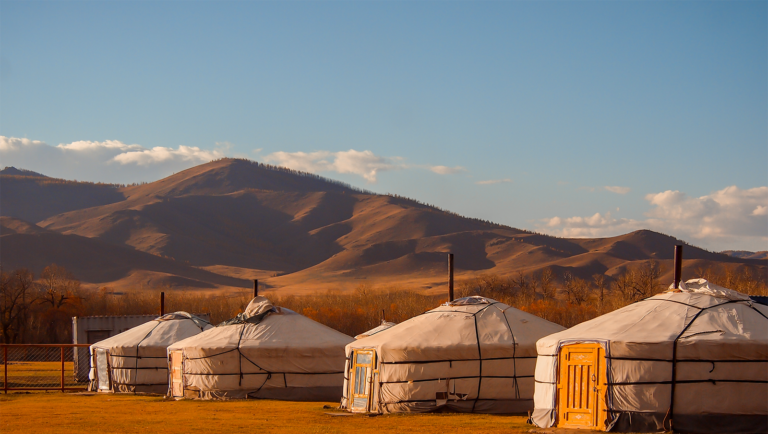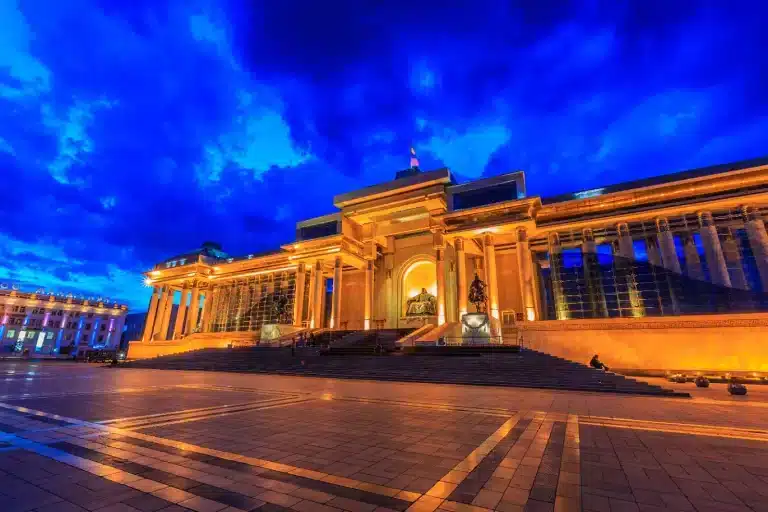Mongolian gers in the Netherlands: quality, purchase and understanding of Mongolian culture
In 2021, a post was posted on the Off-grid living group about transporting Mongolian gers to the Netherlands, as part of a project to bring handmade furniture and Mongolian products to Europe. This idea was received with great enthusiasm and led to an extensive search for the best way to make authentic Mongolian gers available to the Dutch market.
The history of Mongolian gers
The Mongolian ger, or yurt, has a long and rich history dating back to the time of the great nomadic civilisations. These traditional, round tents have been an essential part of the nomadic lifestyle in Central Asia for over a thousand years and have adapted to different climates and cultures over time. The ger symbolises the resilience, simplicity and harmony between man and nature that are so characteristic of Mongolian culture.
Research and experiences
During my search for reliable ger suppliers in the unique and challenging country of Mongolia, I have gained valuable information and insights as a former ger resident. This article is based on my own experiences and knowledge gained during this journey of discovery. Although I have been living in the Netherlands for more than 20 years now, I still feel a deep connection to my Mongolian roots. In my youth, I grew up in a ger in Mongolia. This special shelter has won a special place in my heart and I cherish warm memories of the time I spent there.
Wood quality and drying process
One of the most important things to look out for when buying a Mongolian ger in the Netherlands is the quality of the wood. Mongolian ger producers largely source wood from northern Mongolia and southern Russia. They often import the wood un-dried, and then dry it in Mongolia. However, drying wood is a time-consuming and costly process, so some ger producers choose to use un-dried wood. This can lead to problems with the construction and long-term durability of the ger. Therefore, pay close attention to the quality of the wood when buying a ger.
Paint and finishing
Mongolian ger producers often use lower-quality paint than what we are used to in the Netherlands. They rarely use primers and sealers, which can make the finish less durable. In addition, they usually apply the traditional decorations on the ger with water paint, which is less resistant to the elements. It is therefore important to consider repainting or treating the ger with high-quality paint and materials to ensure it can withstand the Dutch climate.
Cloths and materials
The cloths used to cover the gers are custom-made by talented seamstresses in Mongolia. Although the quality of the sewing is generally excellent, the quality of the materials used can vary. Most gers have a polycotton cloth, but its quality can vary greatly. Keep this in mind when buying a ger and consider investing in a high-quality, waterproof cover to extend the life of the ger.
Quality standards and cultural differences
The Dutch are known for their high quality standards and expectations, and rightly so when you spend thousands of euros on a product. However, it is important to realise that Mongolia is a developing country and quality standards there are different from those in the Netherlands. Craftsmanship in Mongolia is impressive, but technical knowledge and resources are often limited. Bear this in mind when buying a ger and do not expect perfection. Adjustments and improvements may be needed to make the ger suitable for the Dutch climate and expectations.
Recommendations for buying a ger
- Buy a Dutch yurt: With a yurt produced in the Netherlands according to Dutch quality standards, you get a reliable, high-quality product. Although these yurts are not fully authentic Mongolian, they have the reliability and durability you would expect from a product that meets Dutch quality standards. However, the price of a Dutch yurt may be higher due to production costs in the Netherlands.
- If you are looking for an authentic Mongolian ger in the Netherlands, pay close attention to the quality of the wood and cloth. Although sellers of authentic gers on the Dutch market often charge much higher prices than the purchase prices in Mongolia, it is important to realise that price can be an indication of quality. In general, the cheaper the ger, the cheaper it is sourced and the lower the quality can be.
- Buy a ger yourself in Mongolia: For the adventurous and handy buyer, it can be interesting to travel to Mongolia and buy a ger yourself. This can be considerably cheaper, but it requires some skill and knowledge to adapt the ger for the Dutch climate.
Buying a Mongolian gers in the Netherlands can be a great way to create a unique and sustainable home. When buying, pay attention to the quality of the wood, finish and materials used, and take into account differences in quality standards and cultural expectations. Be prepared to make adjustments and improvements to make the ger suitable for the Dutch climate and enjoy the charm and history of this special form of living.









